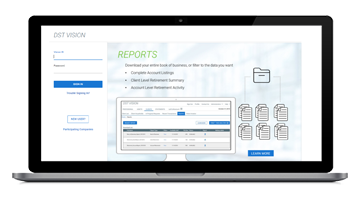Will the Fed cut interest rates at its September meeting?
The likelihood that the U.S. Federal Reserve (Fed) will cut interest rates at its September 16–17 meeting has recently grown because of weakening jobs data and largely stable inflation.

As of September 5, prices of 30-day Fed funds futures implied an 86.0% probability that the Fed would cut its benchmark rate by a quarter point to a range of 4.00%–4.25% versus a 14.0% chance that Fed members would implement a deeper half-point cut to 3.75%–4.00%, according to CME FedWatch. Futures prices implied a 0.0% probability of the rate staying unchanged at its current 4.25%–4.50% range. As recently as last spring, the prospect of a September cut had been viewed as far less likely. Below are answers to questions about prospects for a rate cut at the Fed’s September meeting.
What’s the Fed’s current policy on interest rates?
The Fed has kept its key benchmark rate unchanged at a range of 4.25%–4.50% at each of its last five meetings, holding steady following its most recent cut last December through its latest session in late July.
What recent signals from the Fed suggest the growing possibility of a September rate cut?
A recent split among Fed members could signal the beginning of a shift away from its wait-and-see approach to monetary policy. Although the Fed’s 12 voting members had been unanimous earlier this year in keeping rates steady, two members took a rare step by dissenting at the July meeting by voting for a quarter-point rate cut. It was the first instance since 1993 that two Fed members dissented at the same meeting on a rate decision. Market expectations of a cut rose further on August 22 after Fed Chair Jerome Powell spoke at the central bank’s annual research conference in Jackson Hole, Wyoming, highlighting recent labor market weakness and saying that “the balance of risks appears to be shifting.” Despite the recently growing likelihood of a September cut, financial markets and investor expectations constantly shift, so the Fed could still hold off on cutting.
How might recent inflation and jobs data affect the Fed’s decision?
The latest numbers as of August 20 have helped to fuel investor expectations of a September cut. The Fed’s dual mandate from Congress is to maintain price stability and to maximize employment. Regarding prices, recent inflation readings from monthly Personal Consumption Expenditures Price Index and the Consumer Price Index (CPI) reports have been somewhat mixed. However, they haven’t given the Fed reason to be concerned that runaway inflation is a current risk, even though inflation remains modestly above the Fed’s long-term inflation target of around 2.0%. Although elevated tariffs appeared to boost prices for some categories of consumer goods tracked in the U.S. Bureau of Labor Statistics’ (BLS) July CPI report issued on August 12, the overall annual inflation rate came in at 2.7%—unchanged from June’s report. In addition, on a month-to-month basis, July’s 0.2% CPI figure was below June’s 0.3% reading.
However, recent jobs data has weakened. The BLS’ July employment report released on August 1 showed that previous months’ jobs growth was much slower than had been initially estimated, and bond yields fell. The economy generated 73,000 new jobs in July—well below economists’ consensus expectations—and payroll growth decelerated. In addition, initial estimates for the previous two months’ gains were adjusted sharply downward to just 19,000 for May and 14,000 for June. A subsequent report issued September 5 also showed weak jobs growth of 22,000 for August. Investors have taken these weak readings as an indication that the Fed may conclude that the risk of moderately adding to inflationary pressures by cutting its benchmark rate would be offset by the potential catalyst that a cut would provide to lift a stalling labor market. Chair Powell reinforced this notion in his August 22 speech.
This year's jobs growth slowdown could be a catalyst for a rate cut
Monthly U.S. nonfarm payroll employment growth, July 2022–July 2025
How could financial markets react if the Fed cuts rates in September?
The reaction could be muted if there is a cut; if the Fed doesn’t cut, yields could rise and stock prices could fall, given that the absence of a cut would run against market expectations as of this writing. Prospects of a quarter-point rate cut in September may already be largely baked into recent bond yields and stock prices, so market moves following a cut might not be as big as some expect. Asset prices tend to fluctuate in anticipation of events such as Fed rate decisions, and we’ve already seen shifts ahead of the September meeting. For example, bond yields fell on August 1 in reaction to that morning’s weak monthly jobs report, which increased investor expectations of a rate cut.
As investment strategists, what’s your outlook on rates, and how do you view current fixed-income opportunities?
As of this writing, we continue to expect the Fed to implement two or three rate cuts over the next few months, potentially bringing the rate’s range to either 3.75%–4.00% or 3.50%–3.75% by year end. In our view, yields had recently been pushed higher than they should have been as investors primarily focused on political developments such as the potential for tariff-induced inflation and concerns about growth of the U.S. government’s fiscal deficit. As these concerns drove the narrative about fixed income, bond investors largely ignored the cracks forming in the labor market. Another factor that we believe has been overlooked is emerging disinflation from a recent easing in the cost of shelter—the largest price component factored into the CPI, at 35%. This recent leveling off in home prices and other housing categories may help to offset some of the inflationary impact of higher tariffs, in our view.
As for investment opportunities, our view is that the best time to buy bonds is when no one thinks the Fed will cut. While we saw a meaningful decline in yields after the weak jobs report on August 1, the bond market still looks attractively priced to us, given historically elevated yields. When looking across asset classes, our assessment is that higher-risk assets such as stocks have recently begun to look richly valued, while bonds have become more attractive, especially on a risk-adjusted basis. We offer a broader view of our latest thinking on the trends moving markets in our flagship publication, Market Intelligence.
If the Fed cuts rates in September, what impact could that have on consumers?
The consumer impact of a potential rate cut could ripple across the broader U.S. economy, as consumer spending accounts for nearly 70% of GDP. A cut could reduce borrowing costs for consumer debt, from rates on automobile loans to credit card balances. However, lower rates mean less income for savers who deposit cash into money market accounts and other bank products such as certificates of deposit. As for mortgage rates, they tend to decline after Fed rate cuts, which can have a significant but indirect impact on homebuyers seeking mortgages as well as borrowers with adjustable-rate mortgages rather than fixed loans. However, the Fed only sets its benchmark rate for shorter-term loans; it doesn’t set rates for mortgages, which typically have longer 30- or 15-year terms. Mortgage rates tend to be more closely correlated with the movements in the yield of the 10-year U.S. Treasury, although mortgages carry higher rates than 10-year notes.
Key takeaways
· The likelihood that the Fed will cut interest rates at its September 16–17 meeting has recently grown because of weakening jobs data and largely stable inflation.
· A recent split among Fed members could signal the beginning of a monetary policy shift.
· The reaction in financial markets to a potential quarter-point rate cut in September could be muted, as prospects of such a move may already be largely baked into recent bond yields and stock prices.
The outcome from the Fed's September meeting: a quarter-point rate cut
As expected, the Fed on September 17 approved a quarter-point rate cut, bringing its benchmark rate to a range of 4.00%–4.25%. The vote was 11 to 1, with one Fed governor preferring a deeper half-point cut. In a statement, the Fed noted "downside risks to employment have risen" in light of slowing job gains, a recently higher unemployment rate, and “somewhat elevated” inflation. As for the prospect of additional cuts at its next scheduled meetings on October 28–29 and December 9–10, the Fed said that it will “carefully assess incoming data, the evolving outlook, and the balance of risks.” Individual Fed members’ projections of future rates indicated the possibility of two more rate cuts before year end.
Important disclosures
Important disclosures
Views are those of the authors and are subject to change. No forecasts are guaranteed. This commentary is provided for informational purposes only and is not an endorsement of any security, mutual fund, sector, or index, and is not indicative of any John Hancock fund. Diversification does not guarantee a profit or eliminate the risk of a loss. Past performance does not guarantee future results.
Investing involves risks, including the potential loss of principal. Financial arkets are volatile and can fluctuate significantly in response to company, industry, political, regulatory, market, or economic developments. The information provided does not take into account the suitability, investment objectives, financial situation, or particular needs of any specific person.
Diversification does not guarantee a profit or eliminate the risk of a loss.
MF4830281







